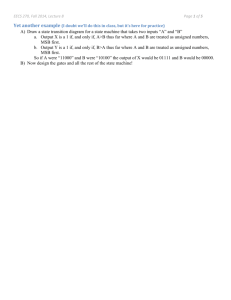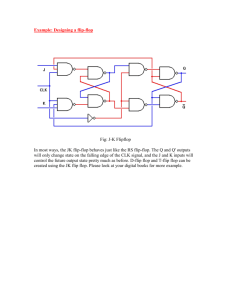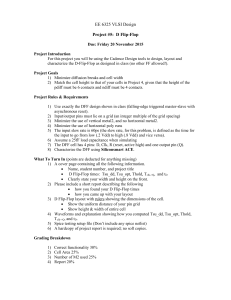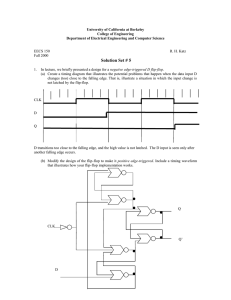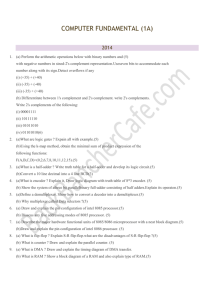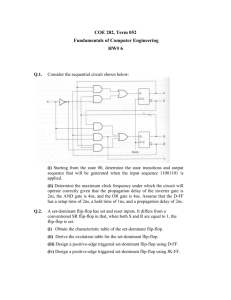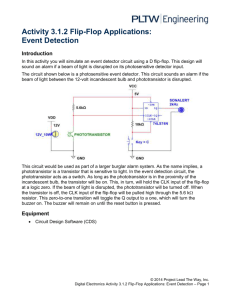Cambridge Technicals in Engineering DType Lesson Element
advertisement
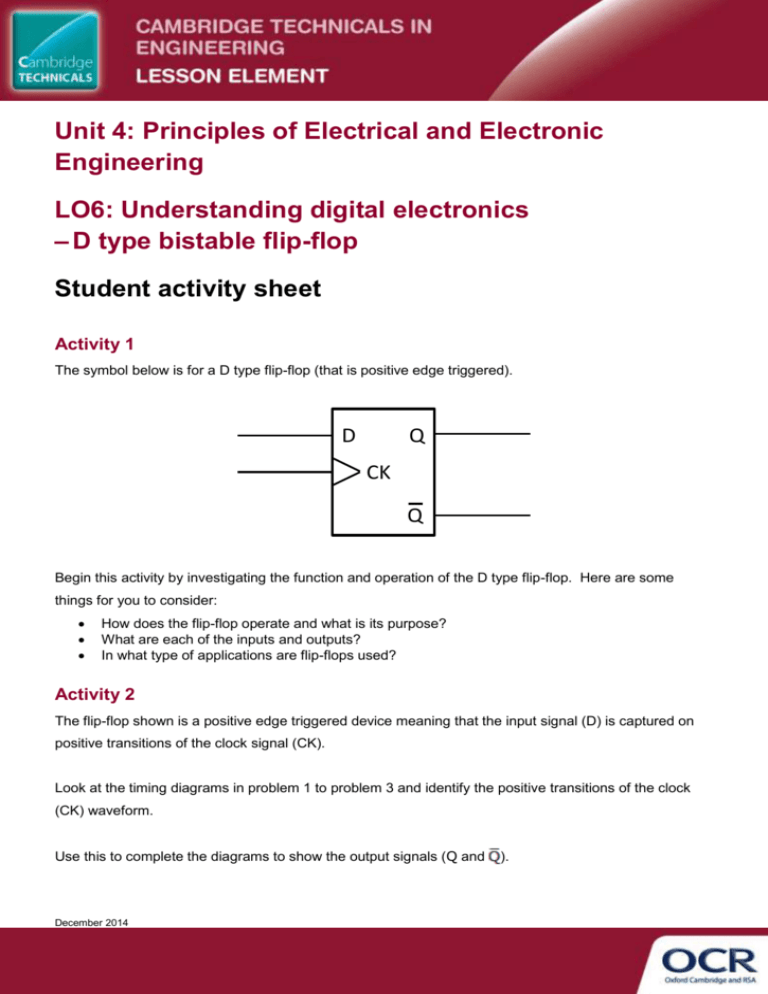
Unit 4: Principles of Electrical and Electronic Engineering LO6: Understanding digital electronics – D type bistable flip-flop Student activity sheet Activity 1 The symbol below is for a D type flip-flop (that is positive edge triggered). D Q CK Q Begin this activity by investigating the function and operation of the D type flip-flop. Here are some things for you to consider: How does the flip-flop operate and what is its purpose? What are each of the inputs and outputs? In what type of applications are flip-flops used? Activity 2 The flip-flop shown is a positive edge triggered device meaning that the input signal (D) is captured on positive transitions of the clock signal (CK). Look at the timing diagrams in problem 1 to problem 3 and identify the positive transitions of the clock (CK) waveform. Use this to complete the diagrams to show the output signals (Q and December 2014 ). Problem 1 Logic 1 D Positive Edge CK Q Q December 2014 Logic 0 Problem 2 D CK Q Q December 2014 Problem 3 D CK Q Q December 2014 Activity 3 The symbol for another D type flip-flop is shown below. This is a negative edge triggered D type flip-flop – with the input signal on D being captured on negative transitions of the clock signal (CK). D Q CK Q Identify the negative edges of the clock waveform (CK) shown in the timing diagrams for problem 4 to problem 6 and complete the corresponding output signals (Q and December 2014 ). Problem 4 Logic 1 D Negative Edge CK Q Q December 2014 Logic 0 Problem 5 D CK Q Q December 2014 Problem 6 D CK Q Q December 2014 Activity 4 A good way to test the operation of a flip-flop is to build a circuit or run a computer-based simulation. If you have access to practical resources, build and test a flip-flop circuit using a D type flip-flop. The following web link contains a simulation of a D type flip in operation. The website is free but you will need to set yourself up with a user name and password to run the simulation. http://www.docircuits.com/public-circuit/457/d-flipflop Run the simulation and analyse the results (the timing diagram). Does this D type circuit function as expected? What is the function of the S and R input pins on this flip-flop? December 2014


